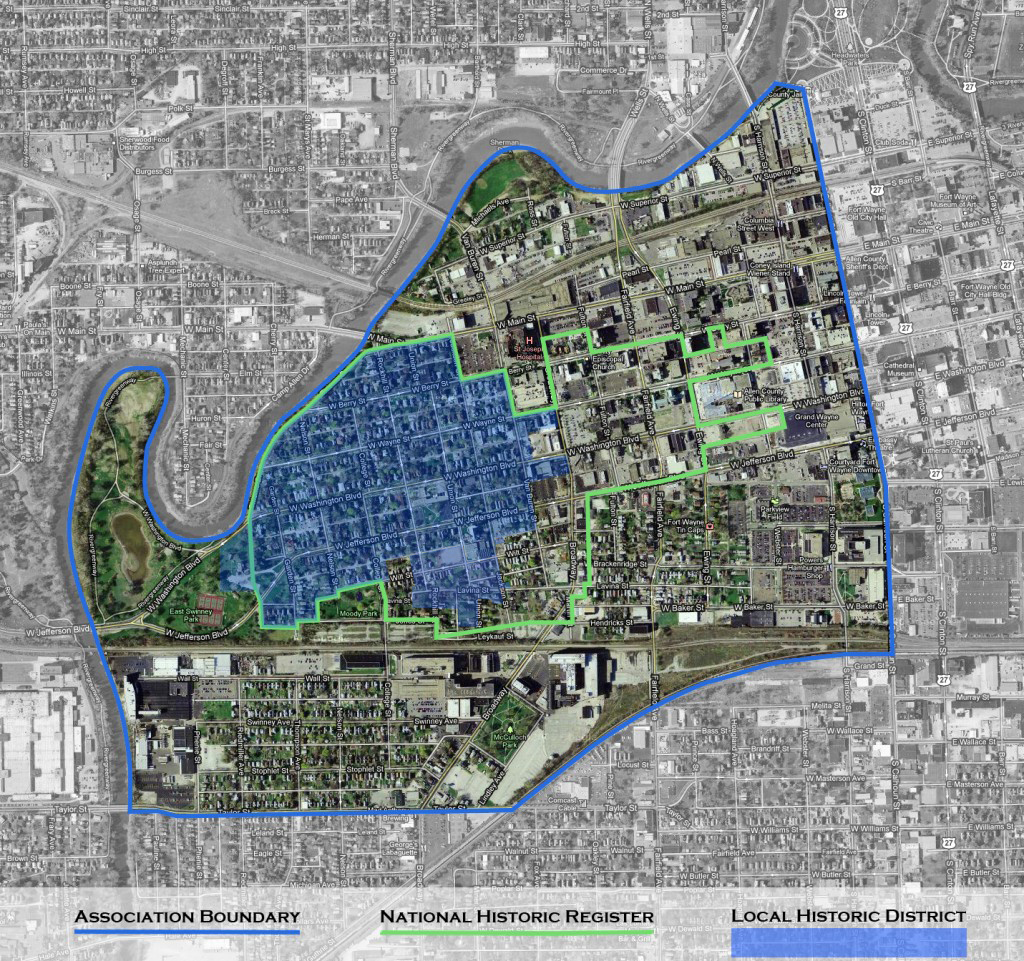Below is a map of our Local Historic District (LHD), National Historic Register, and Association boundaries. This map should not be utilized to determine if your property must adhere to historical guidelines. Read on for more information on that.

Local Historic District
One of the main reasons the WCNA was formed in 1969 was for historic preservation of the neighborhood. In fact, seven of our 11 articles of “Purpose” in our bylaws touch on this critical role for the association. For this reason, the WCNA Board of Directors takes historic preservation very seriously and works in strong partnership with the Historic Preservation Commission to protect every aspect of our finite and delicate history, along with the unique and irreplaceable architecture of our houses, buildings, and landscaping. While we also work hard to attract new investment to the neighborhood we will not – and cannot – do so at the expense of our history. It is our hope that all investors and residents will respect the rules in place to help us in our roles as preservers of history, recognizing that the benefits in terms of property values and quality of life far outweigh any restrictions.
The Local Historic District, or LHD, is the blue shaded portion shown on the map above. This is the area that most people think of when they think of the West Central neighborhood. Generally speaking, a LHD is a district designated as such for its historical nature and characterized by its streets, architecture, planning design, and landscape features. The District can include residential or commercial buildings, or a combination of both. Local Historic Districts may consist of contiguous areas of homes, institutions, and businesses, or it may be a district consisting of a singular designation of a home, institution, or business. Local Historic Preservation Guidelines have been established to ensure that the unique characteristics of local historic districts retain their history, value, and importance to the community as a whole and to the neighborhoods, in particular. Adding to the existing LHD requires signatures from property owners in the target region.
To see the list of all homes inside the Local Historic District, please search the two documents linked below. You must view both documents, as they do not include the same list of properties.
Attention: If your property is on either of these lists, you must get approval from the Historic Preservation Commission (HPC) before proceeding with any changes to your home (or major changes to your landscaping) that can be seen from the public view, including alleyways. The HPC and their staff are an excellent resource for historic renovations, materials, and suppliers, or you can connect with the WCNA board to be directed to helpful resources. It is of utmost importance to the West Central Neighborhood Association that the historical integrity of our neighborhood is maintained. Therefore, any changes made without HPC approval may be subject to fines or loss of the time and money already invested. Click here to view the official HPC window replacement policy.
Did you know Indiana has a tax credit for rehabbing a historic home?
National Register of Historic Places
The green outlined area on the map above represents the portion of West Central that belongs to the National Register of Historic Places, which is “America’s Official List of the Nation’s Places Worthy of Preservation.” West Central was added to the National Register of Historic Places in 1984. It was designated for listing purposes as the West End Historic District nomination and is the oldest historic district to be listed in Fort Wayne. Designation on the National Register of Historic Places is considered an honor and carries with it certain federal protections for the structures and areas located within the boundaries. You can read more about this and view the submitted photos on the History page.
Association Boundary
The large area outlined in blue on the map above designates the West Central Neighborhood Association boundary. This is the largest area of the three and includes residences, businesses, and includes a little over 50% of the Downtown Improvement District. West Central is an integral part of any developments which occur within the Downtown Improvement District boundaries. Membership in the West Central Neighborhood Association is on an annual calendar basis. Learn more on our Become A Member page.

